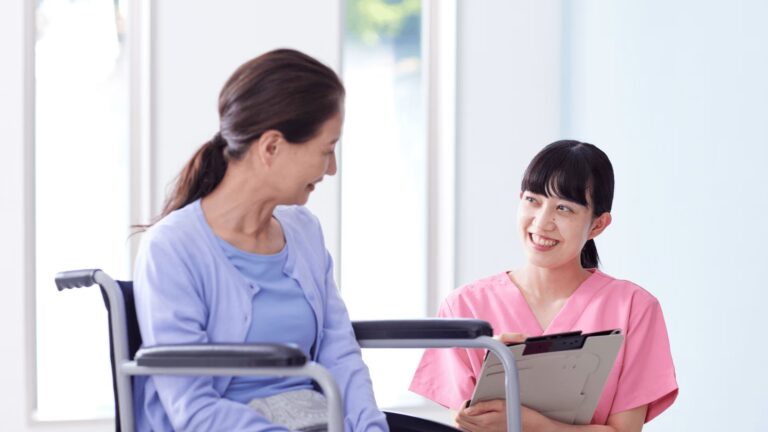When people are unable to protect themselves, whether an elderly neighbour relying on a caregiver or an adult with disabilities depending on others, who steps in to keep them safe? Safeguarding vulnerable adults is about ensuring they live free from abuse, neglect, or exploitation. In the UK, it’s not just a duty; it’s the law, and everyone’s responsibility.
By the time you finish this guide, you’ll have a clear grasp of:
- The role of caregivers and professionals in safeguarding vulnerable adults.
- How to recognise and report concerns to prevent harm effectively.
- Why training is essential in ensuring proper safeguarding measures.
- The importance of shared responsibility and how you can contribute to protecting those at risk.
What Is Safeguarding?
Safeguarding refers to the measures and actions taken to promote well-being and protect people from harm, abuse, and neglect. When applied to vulnerable adults (also called “adults at risk”), it means ensuring that those who cannot easily protect themselves are kept safe from abuse or exploitation.
Safeguarding is a broad concept. It includes creating safe environments (for example, care homes having proper policies and vetted staff), being alert to the signs of abuse, and taking timely action to stop any harm. Importantly, safeguarding adults is everyone’s responsibility. Whether you are a professional, a family member, or a concerned neighbour, you have a role in noticing concerns and reporting them. By staying informed about what safeguarding entails, you can help ensure that vulnerable individuals in your community live safely and are treated with respect.
Who Are Vulnerable Adults?
A vulnerable adult (or “adult at risk”) is generally a person aged 18 or over who, because of their situation, may be unable to protect themselves from harm or exploitation. Common examples include:
- Elderly persons who are frail or have cognitive impairments (e.g. dementia) and depend on others for care.
- Adults with physical disabilities or chronic illnesses that limit their ability to fully care for themselves.
- Individuals with learning disabilities or significant mental health conditions that affect their judgment or ability to live independently.
- Adults who lack the mental capacity to make certain decisions (for example, due to brain injury or advanced dementia).
- People with substance abuse problems or those who are extremely socially isolated (having few or no support networks).
Under UK law (the Care Act 2014), an adult is considered “at risk” if they need care and support, are experiencing or at risk of abuse or neglect, and cannot protect themselves because of those needs. Understanding who might be vulnerable helps us stay vigilant. It reminds us that some adults, due to health, age, or circumstances, may need extra safeguards to ensure their well-being.
Types of Abuse & How to Identify Them
Vulnerable adults can experience many different forms of abuse or neglect. Below are some key types of abuse and what to look out for:
- Physical abuse – Inflicting physical pain or injury (e.g. hitting, pushing, rough handling). Often results in unexplained bruises, burns, or other injuries.
- Emotional or psychological abuse – Acts that harm an adult’s emotional well-being, such as threats, humiliation, intimidation, or isolation. Victims may appear depressed, fearful, or withdrawn.
- Sexual abuse – Any non-consensual sexual act or contact. This ranges from unwanted touching to rape. Possible signs include unexplained injuries in private areas or sudden changes in behaviour around certain people.
- Financial abuse – Misusing or stealing an adult’s money, property, or benefits. Examples include coercing someone to sign papers or taking funds from their account. Warning signs can be missing valuables, sudden unpaid bills, or other unusual financial activity.
- Neglect – Failing to meet an adult’s basic needs. This might mean leaving someone without adequate food, heat, hygiene, or medical care. Signs include malnutrition, poor personal hygiene, or untreated medical issues.
- Other forms of abuse – This can include discriminatory abuse (mistreatment based on prejudice like racism or ageism), institutional abuse (when a care setting’s routines or norms cause harm or neglect), domestic abuse (abuse by a partner or family member), and modern slavery (exploitation or forced labour/human trafficking involving vulnerable people).
Knowing these categories and their signs is crucial. Often, a vulnerable adult cannot speak up due to fear or inability; that’s why being observant is key. Unexplained injuries, sudden mood changes, or unusual financial activity are red flags – if something feels “off” and doesn’t make sense, report it and let professionals check.
The Legal Framework & UK Laws
The UK has strong laws and guidelines to protect vulnerable adults:
- Care Act 2014: The cornerstone of adult safeguarding in England. It requires local authorities to protect adults at risk and sets out how agencies (councils, NHS, police) must work together. Under this Act, local authorities investigate serious concerns (often called a Section 42 enquiry) and establish a Safeguarding Adults Board to oversee protection in the area.
- Mental Capacity Act 2005: Provides a framework for helping adults who can’t make certain decisions. In safeguarding, if an adult at risk isn’t able to understand the danger they’re in, authorities can step in and make decisions in their best interest.
- Safeguarding Vulnerable Groups Act 2006: This law led to the creation of the Disclosure and Barring Service (DBS) for vetting caregivers. Employers must run DBS background checks to prevent individuals with a known history of abuse from working in care roles.
- Other laws and guidance: The Human Rights Act reinforces everyone’s right to be free from inhumane or degrading treatment (which abuse would violate). Whistleblowing laws protect people who report concerns in good faith. Official guidance like the UK Government’s policy paper on adult safeguarding provides key principles on how authorities and care services should prevent and respond to abuse.
This legal framework makes clear that safeguarding is not optional – it’s a legal duty. When abuse is reported, agencies must investigate and act. Typically, social services, health professionals, and police work jointly so that no serious concern falls through the cracks and abusers are held accountable.
The Role of Caregivers & Professionals
Caregivers and professionals are on the front lines of safeguarding vulnerable adults. They have daily contact with at-risk individuals and are often the first to notice when something is wrong. Staying vigilant, offering compassionate care, and taking action when needed is essential.
- For family members and informal carers: Watch for physical or emotional changes, ensure your loved one’s needs are met, and monitor the quality of outside care. If you suspect mistreatment, speak up and seek help immediately.
- For professionals (care workers, nurses, doctors, social workers): Safeguarding is a core duty. Follow training and workplace policies, provide safe and respectful care, document incidents, and report concerns to a manager or safeguarding lead.
- Reporting and collaboration: Social workers often coordinate safeguarding responses, and if a crime is suspected, the police may get involved. Professionals—whether a GP noticing neglect or a care home manager overseeing staff—must share information and work together to protect individuals.
Regardless of your role, never ignore concerns. Safeguarding is most effective when everyone communicates and acts quickly. By speaking up and following procedures, you help prevent further harm and could even save a life.
How to Report Safeguarding Concerns
If you suspect that a vulnerable adult is being abused or neglected, it’s vital to report your concerns. Acting quickly can prevent further harm. Here’s how to raise a safeguarding concern in the UK:
- If someone is in immediate danger, call 999. For non-emergencies, you can call 101 to report the issue to the police.
- Contact your local council’s adult safeguarding team. Every council has an Adult Social Care department to safeguard concerns. Explain what you observed or suspect, and they will assess and follow up on the information. They will look into it and arrange help if needed. You can report even if you’re not certain – it’s always better to raise a concern than stay silent.
- If you work with vulnerable adults, follow your workplace’s safeguarding policy. Report concerns to your manager or safeguarding lead. They will then inform the appropriate authorities. If internal channels fail or you worry about retaliation, remember that whistleblowing laws protect you for reporting genuine concerns.
- You can also seek advice from a helpline. For example, Hourglass (Action on Elder Abuse) has a confidential helpline. They can guide you on the next steps, but usually, you will still need to involve the police or social services to take action.
When making a report, give as much detail as you can (who is involved, what happened, when and where). Don’t delay reporting because you’re unsure — professionals can evaluate the situation. Once you report, the authorities or safeguarding team will take responsibility for investigating and protecting the adult at risk.
Safeguarding Training & Best Practices
Investing in safeguarding training is essential for anyone who works with or cares for vulnerable adults. Formal training teaches how to identify signs of abuse, the correct procedures for reporting, and ways to prevent harm. Many professions (nurses, social workers, care staff, etc.) require regular adult safeguarding training. Even family caregivers and volunteers can benefit from training to better understand what to do if they suspect abuse.
To keep vulnerable adults safe, you can follow these key practices:
- Involve them in decisions about their care so they feel empowered.
- Keep clear records of any concerns or incidents.
- Share information responsibly with relevant services (doctors, social workers, police) while maintaining confidentiality.
- Ensure proper vetting of staff and volunteers through DBS background checks.
- Promote an open culture where people feel safe to report concerns or mistakes.
It’s also wise to keep your knowledge up to date. Guidelines and policies can change, and new forms of abuse (like online scams) can emerge. Consider taking refresher or advanced courses as needed. For example, Apex Learning offers a Safeguarding Vulnerable Adults training course that covers how to recognize abuse, outlines UK laws, and teaches best practices for protecting adults at risk.
Completing such a course (with accredited certification) can boost your confidence and skills in handling safeguarding issues. Ongoing learning and awareness are key to maintaining a safe environment for those in your care.
FAQ
What is an example of safeguarding adults?
A care worker reporting concerns about an elderly person’s neglect to ensure they receive proper support and protection.
What is meant by safeguarding?
Safeguarding means protecting individuals from abuse, neglect, or harm while ensuring their rights, dignity, and safety.
What are the 6 key principles of safeguarding adults?
The six key principles of safeguarding are empowerment, prevention, proportionality, protection, partnership, and accountability, all working together to keep individuals safe.
What is meant by safeguarding vulnerable adults?
Safeguarding vulnerable adults means ensuring their safety by preventing harm, responding to concerns, and protecting their rights and well-being.
Conclusion
Safeguarding vulnerable adults is fundamental to a caring society. It ensures that those at risk are given protection, support, and respect. By understanding the signs of abuse and knowing how to respond, each of us can help make our communities safer. Remember, safeguarding is everyone’s business – if you notice something, say something. By staying vigilant and informed, we can prevent abuse and neglect and ensure that all adults can live free from fear and harm.
Skill 9: Team Collaboration
Team collaboration is the cornerstone of effective healthcare delivery. As a nursing assistant, you’re part of a larger team that includes nurses, doctors, therapists, and other professionals. Working together ensures that patients receive well-rounded, coordinated care.
For instance, imagine a scenario where you notice a patient showing signs of distress. Communicating your observations to the nurse and participating in the discussion about the patient’s care plan ensures that their needs are addressed promptly and effectively. It’s not just about doing your part; it’s about contributing to the team’s success.
To enhance your collaboration skills, engage in team-building activities that foster trust and understanding. Take the time to learn about the roles and responsibilities of your colleagues, so you can better anticipate their needs and expectations. Open communication and a willingness to support others go a long way in building strong, effective healthcare teams. When the team works well together, everyone benefits—especially the patients.



 " alt="What Is Six Sigma? | Six Sigma Explained for Beginners" />
" alt="What Is Six Sigma? | Six Sigma Explained for Beginners" />
 " alt="How to Become a Teaching Assistant in the UK" />
" alt="How to Become a Teaching Assistant in the UK" />
 " alt="Maintaining Patient Confidentiality: A Nursing Assistant’s Duty" />
" alt="Maintaining Patient Confidentiality: A Nursing Assistant’s Duty" />

